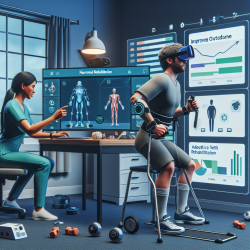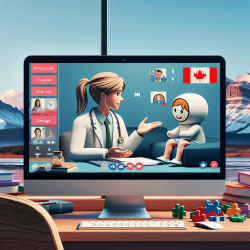As Special Education Directors, we're constantly seeking innovative ways to improve care for our students. A recent study titled "Cost effectiveness of a telerehabilitation intervention vs home based care for adults with severe neurologic disability: A randomized clinical trial" offers some promising insights into the world of tele-rehabilitation. Let's dive into the key takeaways and see how we can apply these findings to our practices.
Understanding the Study
The study compared the cost-effectiveness of traditional home-based care with tele-rehabilitation for adults with severe neurological disabilities. The researchers aimed to determine whether tele-rehabilitation could offer the same, if not better, outcomes at a lower cost.
Key Findings
- Cost-Effectiveness: The study found that tele-rehabilitation is a viable alternative to traditional home-based care. The Incremental Cost-Effectiveness Ratio (ICER) was positive, indicating that tele-rehabilitation can achieve similar outcomes at a comparable cost.
- Quality of Life: Patients in the tele-rehabilitation group reported improvements in social functioning and bodily pain, although the differences were not statistically significant.
- Caregiver Burden: The study found no significant difference in caregiver burden between the two groups, suggesting that tele-rehabilitation does not add extra stress to caregivers.
Implementing Tele-Rehabilitation in Your School
Given these findings, tele-rehabilitation can be a valuable addition to our toolkit. Here are some steps to consider:
- Assess the Needs: Identify students who could benefit from tele-rehabilitation. This could include those with mobility issues or those who live far from specialized care centers.
- Equip Your Team: Ensure that your therapists and special education staff are trained in tele-rehabilitation techniques. Consider webinars, online courses, or partnerships with organizations like TinyEYE.
- Monitor and Evaluate: Regularly assess the effectiveness of tele-rehabilitation interventions. Use metrics like student progress, caregiver feedback, and cost savings to make data-driven decisions.
Encouraging Further Research
While the study provides valuable insights, it also highlights the need for further research. Encourage your team to stay updated on the latest findings and consider participating in research projects. Collaboration with universities and research institutions can also be beneficial.
To read the original research paper, please follow this link: Cost effectiveness of a telerehabilitation intervention vs home based care for adults with severe neurologic disability: A randomized clinical trial










